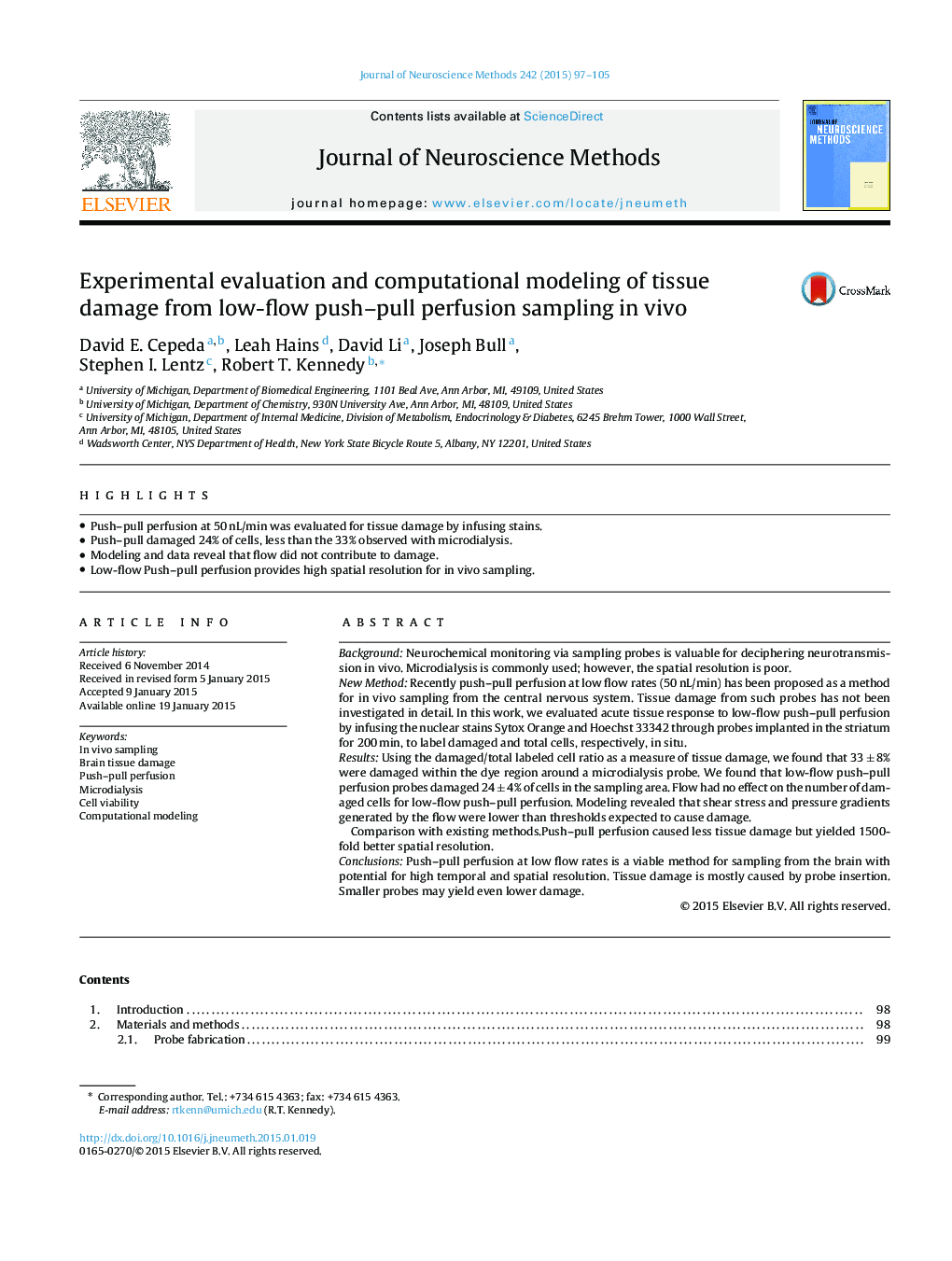| کد مقاله | کد نشریه | سال انتشار | مقاله انگلیسی | نسخه تمام متن |
|---|---|---|---|---|
| 6268393 | 1614627 | 2015 | 9 صفحه PDF | دانلود رایگان |

- Push-pull perfusion at 50Â nL/min was evaluated for tissue damage by infusing stains.
- Push-pull damaged 24% of cells, less than the 33% observed with microdialysis.
- Modeling and data reveal that flow did not contribute to damage.
- Low-flow Push-pull perfusion provides high spatial resolution for in vivo sampling.
BackgroundNeurochemical monitoring via sampling probes is valuable for deciphering neurotransmission in vivo. Microdialysis is commonly used; however, the spatial resolution is poor.New MethodRecently push-pull perfusion at low flow rates (50 nL/min) has been proposed as a method for in vivo sampling from the central nervous system. Tissue damage from such probes has not been investigated in detail. In this work, we evaluated acute tissue response to low-flow push-pull perfusion by infusing the nuclear stains Sytox Orange and Hoechst 33342 through probes implanted in the striatum for 200 min, to label damaged and total cells, respectively, in situ.ResultsUsing the damaged/total labeled cell ratio as a measure of tissue damage, we found that 33 ± 8% were damaged within the dye region around a microdialysis probe. We found that low-flow push-pull perfusion probes damaged 24 ± 4% of cells in the sampling area. Flow had no effect on the number of damaged cells for low-flow push-pull perfusion. Modeling revealed that shear stress and pressure gradients generated by the flow were lower than thresholds expected to cause damage.Comparison with existing methods.Push-pull perfusion caused less tissue damage but yielded 1500-fold better spatial resolution.ConclusionsPush-pull perfusion at low flow rates is a viable method for sampling from the brain with potential for high temporal and spatial resolution. Tissue damage is mostly caused by probe insertion. Smaller probes may yield even lower damage.
Journal: Journal of Neuroscience Methods - Volume 242, 15 March 2015, Pages 97-105